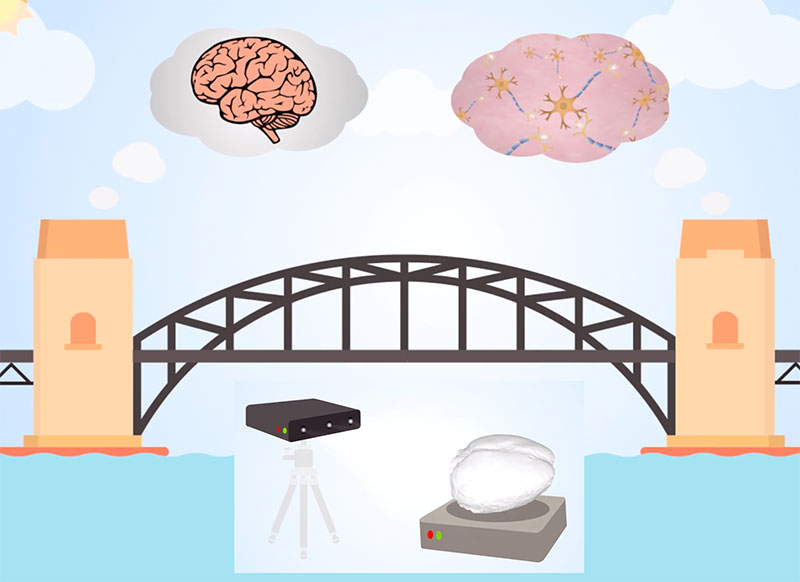Fusing MRI and 3D scanner technology to connect the brain's neural network and anatomy
Kyoto, Japan -- Masanori Shimono of Kyoto University's School of Medicine developed a new protocol that combines 3D scanning technology and MRI, allowing researchers to analyze the brain from its micro-scale neurons to macro-scale structure in unprecedented detail. The research opens the door for better analysis to understand what exactly is happening in the brain.
When it comes to our bodies, what happens in the organ is just as important as what happens between the cells that make them. For example, the brain is divided into sub-regions that house specific functions, and those regions are composed of different types of cells that allow everything to work.
There have been significant strides in technology that allow us to view these dynamic systems, but one significant drawback is that the technology is designed to specific spatial resolutions. A device designed to monitor the interactions of a million cells cannot be fine-tuned to monitor one of individual cell, you would need another specialized instrument.
"If we hope to observe the dynamics beyond static architectures, the trade-off between resolution and recordable viewing angles needs to be resolved," states Shimono. "Therefore, we developed a way that integrates various recording technologies, and accurately overlap that data together. More specifically we combined MRI data with 3D scanning technology."
3D scanner technology is actively utilized in the engineering fields but less so in wet bio-physiological experiments. It was thought that 3D scanning is not as easily applicable to the wet surfaces of bio-organs.
In their video protocol published in JoVE the team began by scanning mice through an MRI to collect their brain data. The surface of these brains was then scanned with a structured-light 3D scanner. The two data sets were analyzed and evaluated to establish the overlapping accuracy.
"Interestingly, the gap distances between the two datasets was around 55 , which is fairly close to the typical spatial scale of neuronal distributions. At the same time, we confirmed that we can record electrical signals from brain slices," Shimono states.
The study not only bridges two spatial scales, but the fields of medicine and engineering. Shimono hopes that the new protocol will be utilized extensively by researchers in both fields to better understand how the brain works, stating that having a micro and macroscopic view of the brain can provide insight into the neuronal basis of mental disorders and other pathologies.
He concludes, "when we first purchased our 3D scanner system, the seller told us that they could not guarantee it would work on wet surfaces like the brain. The procedure to reach our current accuracy was quite challenging, but there is still room for improving it."

Paper Information
【DOI】 https://doi.org/10.3791/58911
Saya Ide, Motoki Kajiwara, Hirohiko Imai, Masanori Shimono (2019). 3D Scanning Technology Bridging Microcircuits and Macroscale Brain Images in 3D Novel Embedding Overlapping Protocol. Journal of Visualized Experiments, 147:e58911.




